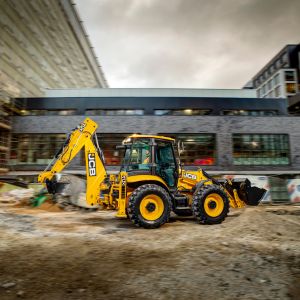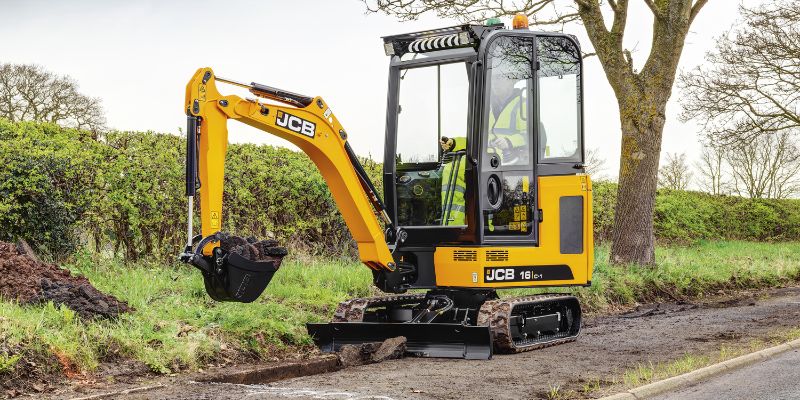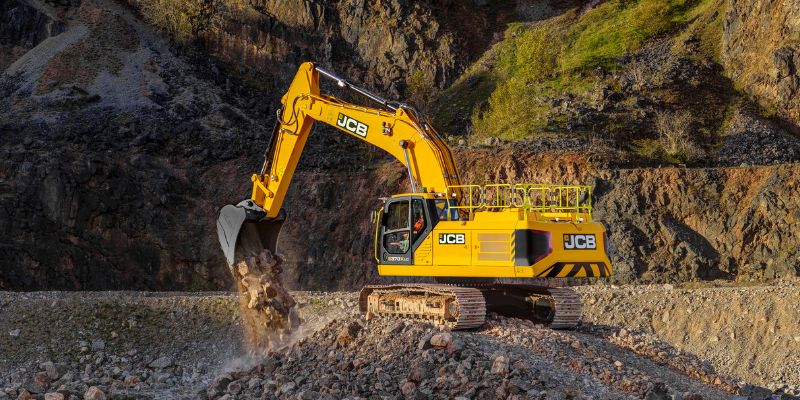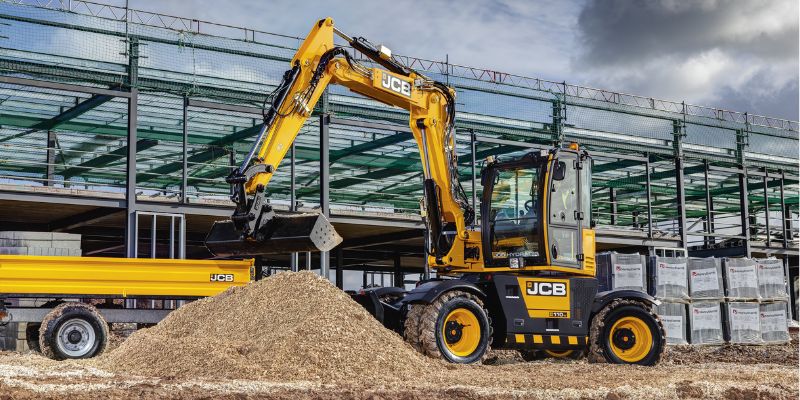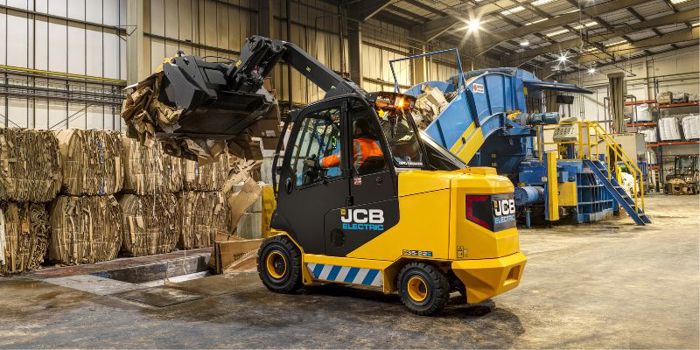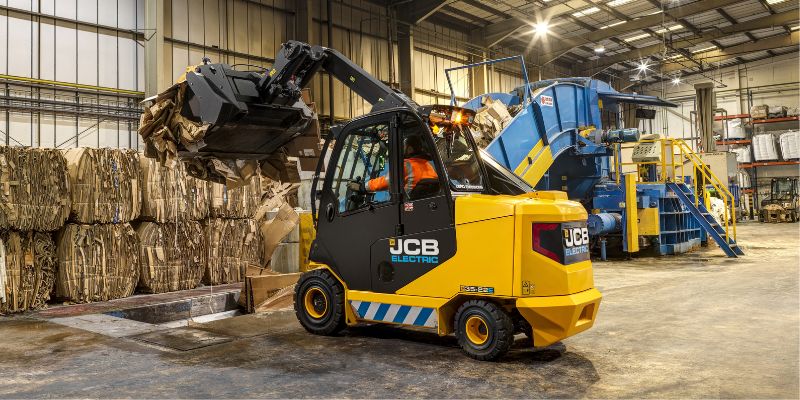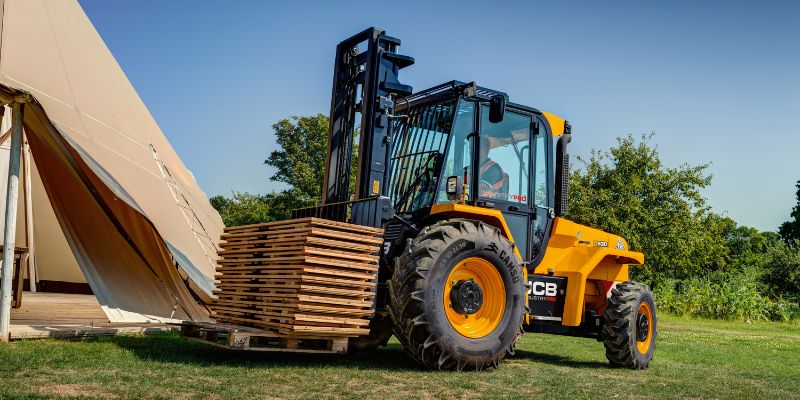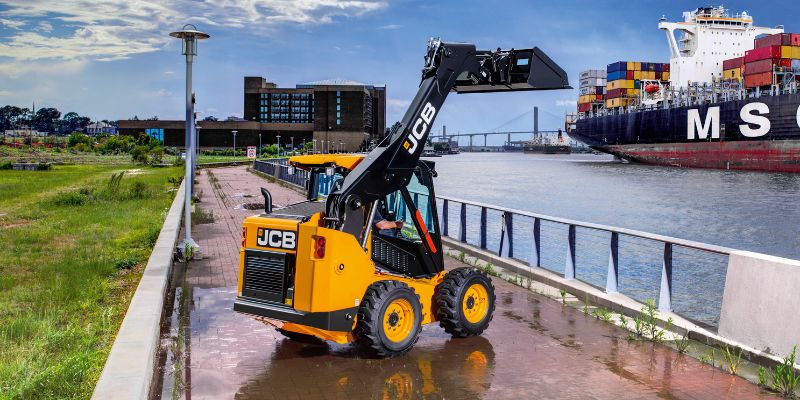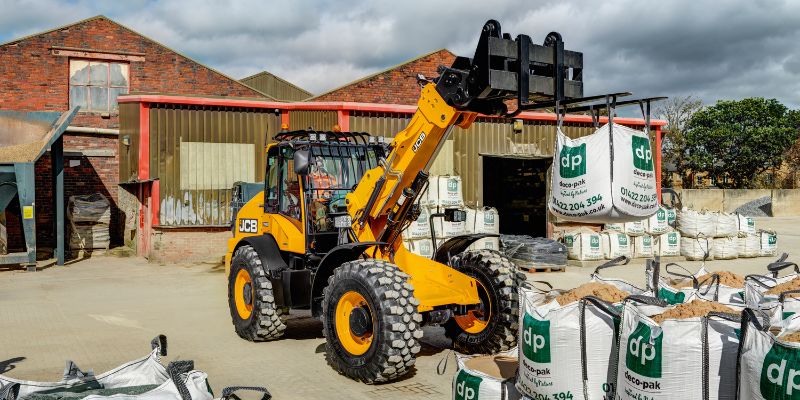JCB Telehandlers
JCB Telehandlers provide excellent lift capacity and and reach, making them ideal for moving heavy loads in areas with restricted access
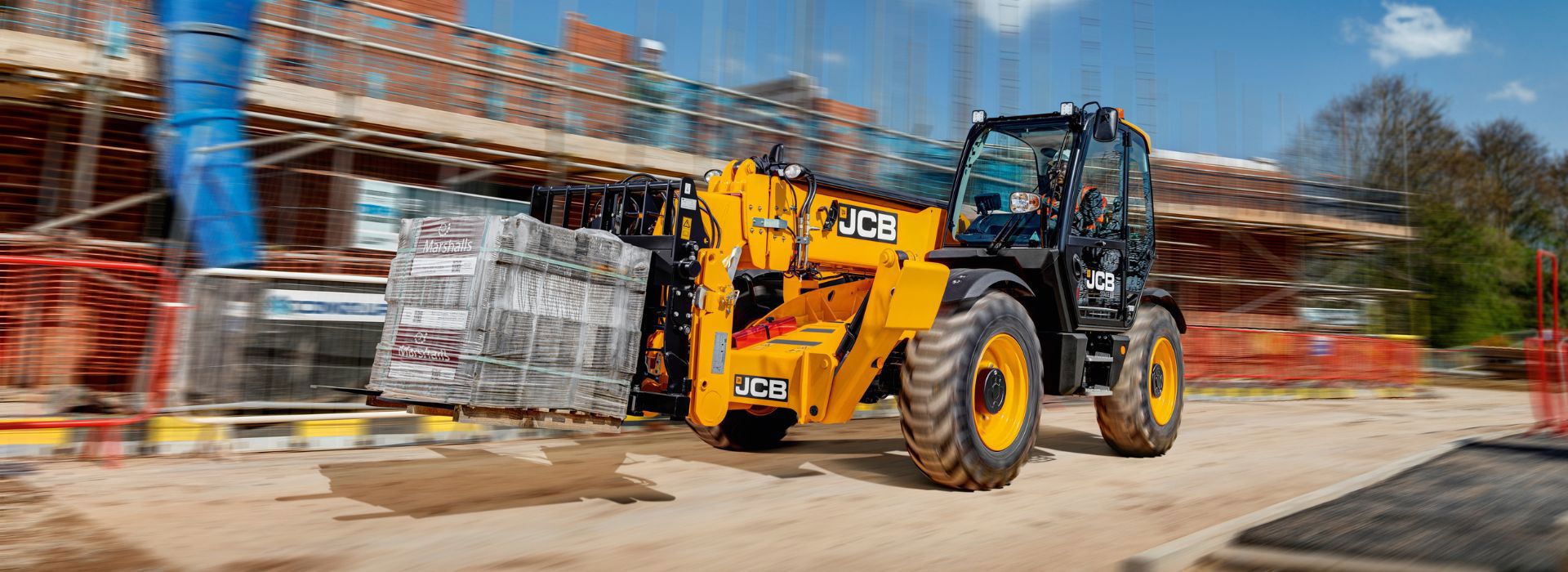

JCB Telehandlers: Versatile Lifting and Material Handling Solutions
JCB telehandlers, also known as telescopic handlers or loadalls, are essential machines for construction material handling and lifting operations. These powerful machines combine the functionalities of a forklift and a crane, featuring a telescoping boom that offers both vertical and horizontal reach.
With impressive lift capacity and extended reach, JCB telehandlers are ideal for elevated material lifting, including tasks like moving loads to rooftops, high platforms, and other elevated areas. Their robust strength and versatility make them indispensable for construction sites and material movement.
Browse All JCB Telehandlers
Explore JCB Telehandlers: Compact, Powerful, and Versatile
Pioneering Telehandler Excellence Since 1977
Since 1977, JCB has led the telehandler industry with their innovative Loadall range, focusing on performance and productivity. Known for competitive pricing, exceptional build quality, and a wide selection of attachments, JCB has earned a global reputation as a leader in telehandler production.
Compact Efficiency for Smaller Applications
JCB’s compact construction telehandlers offer exceptional performance in tight spaces, providing excellent manoeuvrability without compromising on power. The JCB 514-40, the smallest in the range, delivers a lift capacity of 1,400kg and a maximum lift height of 4m. The JCB 525-60E, a zero-emission model, ensures lower noise levels while maintaining productivity, offering a lift capacity of 2,500kg and a lift height of 6m.
Maximum Productivity for Construction Sites
For larger-scale construction projects, JCB’s Loadalls offer maximum productivity with lift capacities from 3,100kg (531-70) to 4,100kg (540-200). With engine power up to 81kW and lift heights ranging from 7m to 20m, these telehandlers are well-suited for diverse site requirements, ensuring maximum return on investment.
Rotating Telehandlers for Versatile Reach
JCB’s rotating telehandlers offer unmatched flexibility with a 360-degree rotating boom. The recently introduced JCB 558-210R PRO and JCB 558-260R PRO provide greater reach, with maximum lift heights of 20.5m and 25.5m, respectively, and lift capacities of 5,800kg, making them perfect for demanding tasks that require precision and versatility.
What are the lift capacity and maximum reach of the largest JCB Telehandlers?
The largest JCB telehandlers deliver exceptional lifting power and reach for demanding construction and industrial applications. Depending on the model, the biggest rigid machines can lift up to 4 tonnes and provide a maximum reach of around 20m. The JCB rotating telehandler can reach a maximum of 26m and has a lift capacity of 5.8 tonnes. JCB also offers high-capacity models within the Loadall range that are designed for heavy-duty material handling on large sites. For exact details, Scot JCB can provide detailed specifications for the model you are considering.
How do I choose between a Compact, Standard Construction, and Rotating JCB Telehandler?
Your choice depends on the type of work you do and the space available on your site.
- Compact Telehandlers are best for tight access, housebuilding,
- Standard Construction Telehandlers are ideal for general material handling, loading, lifting and everyday site work.
- Rotating Telehandlers are suited to applications where you need 360-degree reach, such as roofing, cladding, multi-level access or complex lifting at height.
If you are unsure which category suits your needs, the Scot JCB team can recommend the right machine based on your lifting requirements, attachments and typical site conditions.
What are the key advantages of a telehandler over a standard forklift or crane?
Telehandlers offer a unique combination of lifting height, forward reach and manoeuvrability that forklifts and cranes cannot match. Key advantages include:
- Higher lifting heights than a forklift
- Forward reach for placing loads over obstacles
- Strong versatility with a wide range of attachments
- Better manoeuvrability on rough or uneven terrain
- Lower running and transport costs than a crane
- Ability to handle multiple jobs with one machine
This makes telehandlers a popular choice across construction, agriculture, warehousing and industrial sectors.
Can I use a telehandler for indoor lifting jobs?
Yes, but it depends on the size of the machine and the type of building. Compact telehandlers are suitable for larger indoor spaces such as warehouses, industrial sheds and distribution centres. Good ventilation is essential when using diesel machines indoors.
For fully enclosed areas, the fully electric JCB 525-60E may be a better fit with a maximum lift capacity of 2.5 tonnes and a maximum reach of 3.5m. Scot JCB can advise on which models and attachments are suitable for indoor lifting work.
What is the average life of a telehandler?
With proper servicing and regular maintenance, a JCB telehandler can operate reliably for 8,000 to 12,000 hours or more. Many owners achieve significantly longer machine life thanks to JCB’s robust design, high quality components and strong residual value. Routine servicing, genuine parts and correct operator use all help extend the lifespan of the machine. Scot JCB offers full service support to maximise long term performance.
Can I drive a telehandler on a car licence?
You can drive a telehandler on a standard car licence if the machine is classed as a road-going vehicle and is being driven on the road for work purposes. However, you must have the correct operator training to use the telehandler safely on site. Most employers require a recognised qualification such as CPCS or NPORS.
If you need guidance on training or road regulations, Scot JCB can provide advice based on your location and the type of work you carry out.
